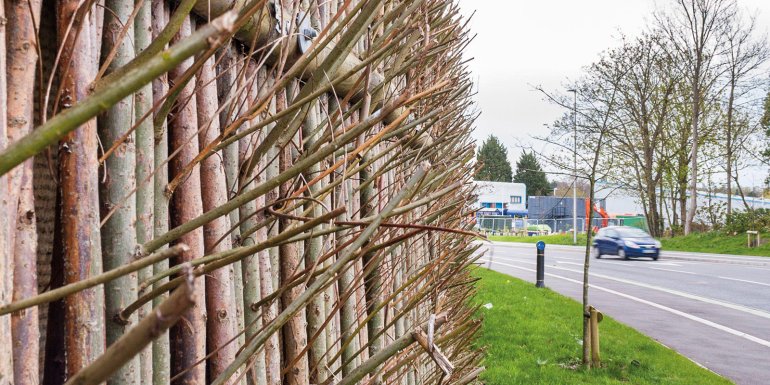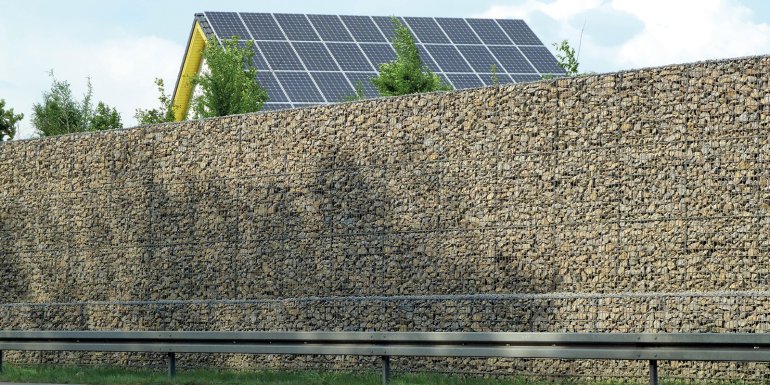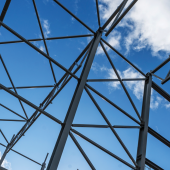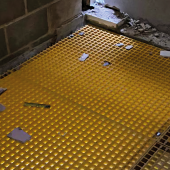Come on feel the noise

Kyriakos Papanagiotou, Founder and Director of KP Acoustics Group, discusses the increasing demand for acoustic solutions in construction to shield from the adverse effects of noise and vibration.
With environmental noise regarded by the World Health Organization (WHO) as a significant public health risk, acoustic solutions will play a key role in the building of smart cities, with a focus on reducing noise pollution and improving urban soundscapes by local authorities. From transport and infrastructure to residential living conditions, acoustic design, noise and vibration monitoring throughout the construction of such spaces will be crucial in adhering to regulations – as well as pushing through planning applications that increasingly consider physical and mental wellbeing.
Protecting people from dangerous levels of noise from construction and low-level nuisance noise and creating effective soundscapes that transform the atmosphere of a built space can all be achieved through advancements in acoustic solutions and continuous sound monitoring.
The amount of noise that a soundscape can absorb will depend on its design, the types and intensity of the noise sources present and its location and context – a busy road will present different challenges to a residential neighbourhood, for example. The soundscape design may incorporate a variety of techniques such as sound-absorbing materials in buildings and structures, creating natural sound barriers with trees and other vegetation, and incorporating water features or other natural elements to mask unwanted noise. However, their effectiveness is relative – sound-absorbing materials, for example, may be more effective at reducing low-frequency noise, while natural sound barriers may be more effective at reducing high-frequency noise.
Renewable energy
The development and maintenance of renewable energy sources such as wind turbines and hydroelectric power continues to grow, and with this does the demand for acoustic solutions to monitor and reduce their impact on surrounding environments.
Wind turbines typically produce sound in the range of 20-200Hz, with the majority of the sound energy concentrated between 50-500Hz. However, the sound levels from wind turbines are generally lower than those from conventional power plants and are typically below the threshold of human hearing at distances greater than a few hundred metres. Hydropower plants generate sound vibrations primarily from water movement, and the sound levels can vary widely depending on the size and type of plant. In general, the sound frequencies generated by hydropower plants are relatively low, typically in the range of 10-1,000Hz.
Renewables also have a part to play in policing conditions during construction, with acoustic, noise and vibration monitoring solutions for on-site construction becoming increasingly sustainable to operate. Renewable energy sources such as solar panels can be used to power consistent noise and vibration monitoring devices on-site for long-term projects, combatting issues such as a lack of access to power grids and lowering the carbon footprint of large-scale construction.
Throughout the planning and construction stages of renewable energy developments, environmental noise monitoring is key to preventing prolonged timelines for project completion. Acoustic consultants are increasingly being called upon for design advice and monitoring services that adhere to strict planning requirements – ensuring that sustainable energy resources safeguard on-site workforces and surrounding communities.

Noise monitoring
WHO has published guidelines on environmental noise levels for various settings, which can serve as a reference for identifying unobtrusive levels of noise. According to WHO, unobtrusive noise levels for residential areas during the day should not exceed 55 decibels (dB), and during the night should not exceed 40dB. In addition, WHO recommends that noise levels in sensitive areas such as hospitals and schools should be kept below 35dB during the day and 30dB during the night.
However, it’s worth noting that what is considered unobtrusive can vary depending on individual preferences and circumstances. Some people may be more sensitive to noise than others, and noise that is unobtrusive in one context may be considered annoying or disruptive in another. Additionally, some types of noise, such as intermittent or impulsive noise, may be more likely to cause annoyance or other negative effects at lower sound levels than continuous noise.
Compact and portable monitoring devices will be needed to ensure that construction works operate at optimal levels. Advancements in high-tech monitoring devices, such as eNView, work to provide robust, cost-effective, automated and real-time noise, dust and vibration monitoring to predict potential hazards – and identify faults for effective maintenance of unobtrusive levels of environmental noise. Automation and self-healing systems will likely become more widespread, reducing the need for manual intervention and increasing the efficiency of remote condition monitoring systems on construction sites of any scale.
Advancements in VR (virtual reality) technology and audio rendering techniques continue to be trialled in a novel approach to environmental noise assessment, and such technology can help to investigate and predict the potential negative effects of noise associated with large-scale infrastructure and property development projects.
As the world becomes more aware of the dangers of environmental noise and the transformative nature of carefully designed soundscapes, the rising demand for noise and vibration monitoring and acoustic technology across construction and demolition sites is inevitable. Those willing to prioritise acoustics in the built environment are quickly realising that acoustics can be a transformative tool for the future.
For more, visit kpacoustics.com








